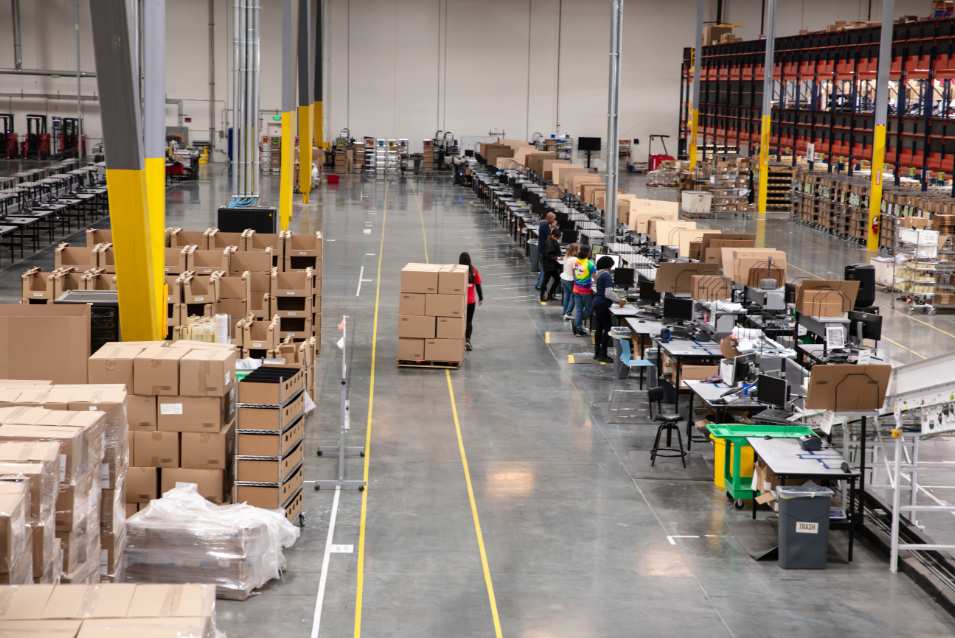Co-warehousing is an innovative concept that represents a departure from traditional warehouse models. It takes a flexible and collaborative approach, tailored to meet the unique challenges of each business. The practice of co-warehousing is gaining momentum across industries as a practical solution for companies dealing with the limitations of old-school warehousing. Experts from Elite Anywhere break down co-warehousing, shedding light on the benefits and drawbacks of sharing warehouse space with other businesses.

What is Co-Warehousing?
Unlike traditional warehousing, where businesses lease or own a standalone space, co-warehousing introduces a shared model, where multiple companies share the same warehouse space and resources, fostering collaboration and resource optimization.
Co-warehousing is about businesses joining forces to utilize a common storage infrastructure, eliminating the need for individual entities to manage standalone warehouses. The shared co-warehousing space allows for a more efficient use of space, personnel, and technology, resulting in cost savings and increased operational agility.
The facilities of a co-warehouse are designed to accommodate the diverse needs of different businesses. Whether it’s e-commerce, small startups, or larger enterprises, the flexibility of co-warehousing makes it a versatile solution for companies of varying sizes and industries.

Benefits of Co-Warehousing
There are numerous benefits for businesses that share a co-warehousing space:
1. Cost-Effectiveness
The core benefit of co-warehousing lies in shared infrastructure, liberating businesses from the costs of standalone warehouses. Consolidating resources in a communal space results in significant cost reductions, covering maintenance, utilities, and operational overhead. The economies of scale achieved through shared expenses enhance cost-effectiveness, offering both small to mid-sized enterprises and larger corporations a practical and advantageous solution for optimizing costs in the face of market dynamics.
2. Operational Efficiency
The collaborative nature of shared spaces allows businesses to streamline their processes, optimizing both time and resources. This inherent agility allows quick adaptations to changing market demands, providing the flexibility needed to navigate industry fluctuations. Businesses in co-warehousing setups efficiently meet customer demands, reduce lead times, and enhance overall supply chain performance through streamlined and responsive operational frameworks.
3. Flexibility and Scalability
Co-warehousing tailors solutions to specific requirements of different businesses. Its inherent flexibility enables companies to optimize storage space based on fluctuating demands, avoiding excess capacity or constraints during periods of increased activity. Scalability is seamless, allowing businesses to adjust operations within the shared facility effortlessly. Whether a startup entering new markets or an established enterprise navigating seasonal variations, co-warehousing provides a dynamic framework for businesses to thrive in the ever-changing marketplace.
4. Collaborative Environment
Sharing co-warehousing unites diverse companies, fostering collaboration and knowledge exchange. Proximity within the shared facility cultivates an atmosphere for shared ideas, industry insights, and best practices. This collaboration extends beyond cost-sharing, nurturing a community-driven ethos where businesses learn from each other, troubleshoot challenges collectively, and potentially form partnerships. Networking opportunities often lead to unexpected collaborations, paving the way for innovative solutions and mutually beneficial relationships.
5. Access to Shared Amenities
Facilities in a co-warehouse offer advanced technology and essential services that individual businesses may find challenging to invest in independently. Participants gain access to cutting-edge systems for inventory management, order fulfillment, and security, optimizing overall efficiency. Shared services, such as maintenance and administrative support, alleviate operational burdens linked to managing a standalone facility.
6. Adaptability to E-Commerce Dynamics
Shared facilities in co-warehousing are strategically located, enabling businesses to place their inventory closer to end consumers, reducing shipping times and transportation costs. This proximity to key markets enhances the speed and efficiency of order fulfillment, critical for meeting the demands of today’s online shoppers. Additionally, co-warehousing seamlessly integrates technology, allowing businesses to leverage advanced automation and robotics for order processing. This improves operational speed, enhances accuracy, and reduces errors in the fulfillment process.

Downsides of Co-Warehousing
While co-warehousing presents a compelling solution for many businesses, it’s important to acknowledge the potential downsides that come with it:
1. Limited Control
Businesses operating in a shared space may face challenges in maintaining full control over their operations. Decisions related to the shared infrastructure and common areas may be subject to collective agreement, limiting individual autonomy.
2. Security Concerns
Sharing warehouse space raises security considerations. Businesses must trust that their co-warehousing partners adhere to robust security measures to protect against theft, damage, or unauthorized access.
3. Communication and Coordination
Efficient communication and coordination are crucial in a co-warehousing environment. Challenges may arise if businesses do not effectively share information or coordinate activities, potentially leading to disruptions or inefficiencies.
4. Space Constraints
Depending on demand and the number of businesses sharing the space, there may be limitations on available storage space. This could pose challenges during peak seasons or for businesses with rapidly growing inventory needs.
5. Risk of Dependency
Businesses relying on shared amenities and services may face a risk of dependency on the co-warehousing provider. Any disruptions in the shared services, such as technological failures or operational issues, could impact multiple businesses simultaneously.
6. Flexibility Constraints
While co-warehousing is designed to be flexible, businesses with highly specialized storage or operational requirements may find it challenging to adapt within a shared environment that caters to a diverse range of needs.

Who Is Co-Warehousing For?
Many different types of businesses can benefit from co-warehousing, including:
1. E-Commerce Businesses
Co-warehousing aligns perfectly with the dynamic requirements of e-commerce, providing a strategic advantage in meeting the rapid order fulfillment expectations of online shoppers. The proximity to key markets enhances delivery speed, a crucial factor in the competitive e-commerce landscape.
2. Startups and Small Businesses
For startups and small businesses with limited resources, co-warehousing offers an affordable and flexible alternative to traditional warehousing. It allows them to benefit from shared amenities, scale operations as needed, and reduce the financial burden associated with maintaining standalone facilities.
3. Logistics and Distribution Companies
Co-warehousing is beneficial for logistics and distribution companies seeking strategic locations for their operations. Proximity to transportation hubs and key markets enhances efficiency in the movement of goods, contributing to a more streamlined supply chain.
4. Businesses with Fluctuating Inventory Needs
Co-warehousing is ideal for businesses experiencing seasonal fluctuations or periodic spikes in demand. The model allows for scalable solutions, enabling companies to efficiently manage varying inventory levels without committing to fixed, long-term leases.

Conclusion
For businesses navigating the complexities of supply chain management, co-warehousing can be a strategic ally, as it offers a shared infrastructure that minimizes individual costs. The scalability of co-warehousing is particularly advantageous for startups and businesses with fluctuating inventory needs, allowing them to scale operations seamlessly without the burden of committing to fixed, long-term leases. Opting for co-warehousing can streamline logistical processes and position your business for sustained growth and improved operational adaptability in the competitive business environment.
About Us

More than just a white glove delivery company: we specialize in receiving, warehousing, shipping, and national white glove delivery & installation services.
Categories
Related posts
Ready to get started?

Experience new growth opportunities and elevate your business to the next level with our unparalleled white-glove delivery service and extensive coverage. By partnering with us, you can tap into previously undiscovered potential that will drive you closer to your goals.

Latest blog posts
Building a Winning E-commerce Business Strategy
Unlock e-commerce business strategy. Learn about audience targeting, marketing, user experience, and retention strategies for lasting success!
What to Know Before Moving to or from San Antonio
Elite Anywhere will give you everything you need to know about a San Antonio relocation, which neighborhoods to explore, and how to make your move.
Your Guide to Moving to Tampa
We will walk you through everything you need to know. By the end, you’ll feel fully prepared and hopefully even more excited about moving to the Tampa Bay.

A complete end-to-end logistics company. From receiving to last-mile delivery and everything in between, our staff delivers a true white glove experience with meticulous care and attention to detail. Need something pickup up, crated, and delivered - anywhere in the world? Let's get started!





